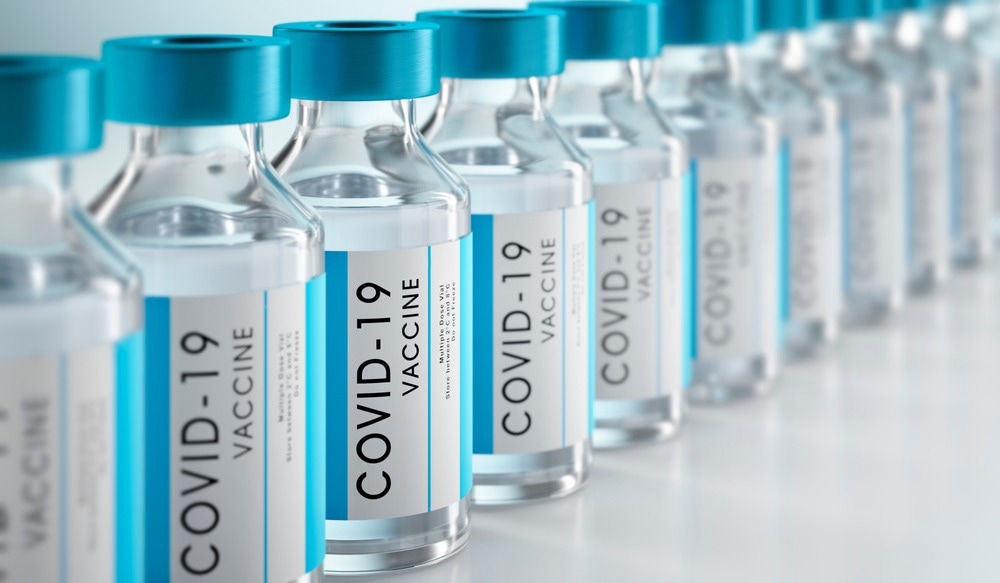 By Neha MathurReviewed by Danielle Ellis, B.Sc.Nov 24 2022
By Neha MathurReviewed by Danielle Ellis, B.Sc.Nov 24 2022In a recent study posted to the medRxiv* server, researchers determined whether neutralizing antibody (NAb) levels were predictive of the efficacy of fractional vaccine doses against severe acute respiratory syndrome coronavirus 2 (SARS-CoV-2) infection.
 Study: Predictive efficacies of vaccine dose fractionation using neutralizing antibody levels. Image Credit: peterschreiber.media/Shutterstock
Study: Predictive efficacies of vaccine dose fractionation using neutralizing antibody levels. Image Credit: peterschreiber.media/Shutterstock

 *Important notice: medRxiv publishes preliminary scientific reports that are not peer-reviewed and, therefore, should not be regarded as conclusive, guide clinical practice/health-related behavior, or treated as established information.
*Important notice: medRxiv publishes preliminary scientific reports that are not peer-reviewed and, therefore, should not be regarded as conclusive, guide clinical practice/health-related behavior, or treated as established information.
Background
During the 2016 yellow fever outbreak, Angola and the Democratic Republic of Congo (DRC) adopted fractional doses of the 17DD yellow fever vaccine to accelerate vaccine roll-out and successfully combated yellow fever with 1/5 of the standard vaccine dose. Likewise, during the 2022 monkeypox virus outbreaks in the United States, the Food and Drug Administration (FDA) issued an emergency use authorization (EUA) for the JYNNEOS vaccine in a lower volume (one-fifth) for reducing the incidence of monkeypox infections by intradermal injection.
Fractionation of vaccine doses might be an effective strategy to overcome vaccine shortages and their increasing inefficacy amid the continuous emergence of immunity-evading SARS-CoV-2 variants. Most importantly, they might have comparable VEs in contrast with the standard doses. Unfortunately, clinical trials test mainly for standard vaccine doses rather than fractional doses. However, immune response in the form of NAb titers is a good enough correlate of VE of fractional vaccine doses.
About the study
In the present study, researchers first performed a systematic review of 51 peer-reviewed studies on within-host models of SARS-CoV-2 in PubMed on 15 March 2022. They extracted relevant information related to vaccines (10 types) and participants (vaccinated or convalescent) from the 13 selected studies. They analyzed the relationship between in-vitro NAb neutralization levels and the VEs of 10 COVID-19 vaccines against SARS-CoV-2 infection(s). Notably, all the reported studies followed the Preferred Reporting Items for Systematic Reviews and Meta-Analyses (PRISMA) guidelines.
The relevant information encompassed vaccine name, platform (mRNA or non-mRNA), schedule, and standard dosage, defined as the dosage approved for phase III trials. Further, they extracted the type and the date of neutralization assay used in a study. Also, they paid attention to the sample size and age of vaccinated participants and convalescents in each included study. Furthermore, the team used a random or a fixed effect model to perform a meta-analysis depending on the heterogeneity between studies.
Since different studies used different assays, the team standardized the NAbs level for each study as the ratio of the vaccine-induced NAbs level vs. NAbs measured in convalescent sera. They referred to it as the ‘mean neutralization level’ and coupled it with the 95% confidence intervals (CIs). Over the study period after vaccination for each dosage was complete, they selected peak NAb level to model the relationship between NAbs level and vaccine efficacy.
Study findings
The researchers identified 2811 studies through an electronic search on PubMed and excluded 2777 duplicates. They screened the full text of 83 studies, from which only 51 met the inclusion criteria of the current systematic review. Further, they compiled 13 records from Pubmed of VE against asymptomatic and symptomatic infection by 11 COVID-19 variants (e.g., Omicron and Delta) and 10 types of vaccines (e.g., BNT162b2 and CoronaVac). The rooted mean square error (RMSE) for the predicted VE for asymptomatic and symptomatic infection was 2.43 and 0.16%, respectively, assessed by the logistic model based on the information of standard-dose vaccines.
Compared to convalescent levels, VE against asymptomatic (8.8% to 71.8%) and symptomatic (33.6% to 98.6%) infection increased. Likewise, the mean neutralization levels spiked from 0.1 to 10 folds of the convalescent level. Interestingly, the VE of mRNA vaccines, which provide the most robust protection, decreased slowly for fractional dosing between 50% and 100% dosage. Protein subunit vaccines also showed a significantly increasing trend of VEs over dose fractionation. For instance, in the study range of dose fractionation from 0.03 to 5 dosings, protein subunit vaccines showed a VE increase from 5.2% to 59.6% against asymptomatic and 19.4% to 98.4% against symptomatic infection.
Conclusions
The current study results were consistent with studies predicting immune protection against symptomatic COVID-19 infection. The researchers further projected VE of fractional doses against asymptomatic infections.
According to the authors, fractional dose vaccination could help to optimize the availability of vaccine doses, especially if global vaccine shortage issues persist. However, even with an ample COVID-19 vaccine supply, this strategy would still highly benefit susceptible individuals. It could provide them partial immunity against SARS-CoV-2 reinfection(s) with limited side effects. Moreover, fractional vaccination would help to bring down the cost and resources needed to curb future COVID-19 outbreaks.

 *Important notice: medRxiv publishes preliminary scientific reports that are not peer-reviewed and, therefore, should not be regarded as conclusive, guide clinical practice/health-related behavior, or treated as established information.
*Important notice: medRxiv publishes preliminary scientific reports that are not peer-reviewed and, therefore, should not be regarded as conclusive, guide clinical practice/health-related behavior, or treated as established information.